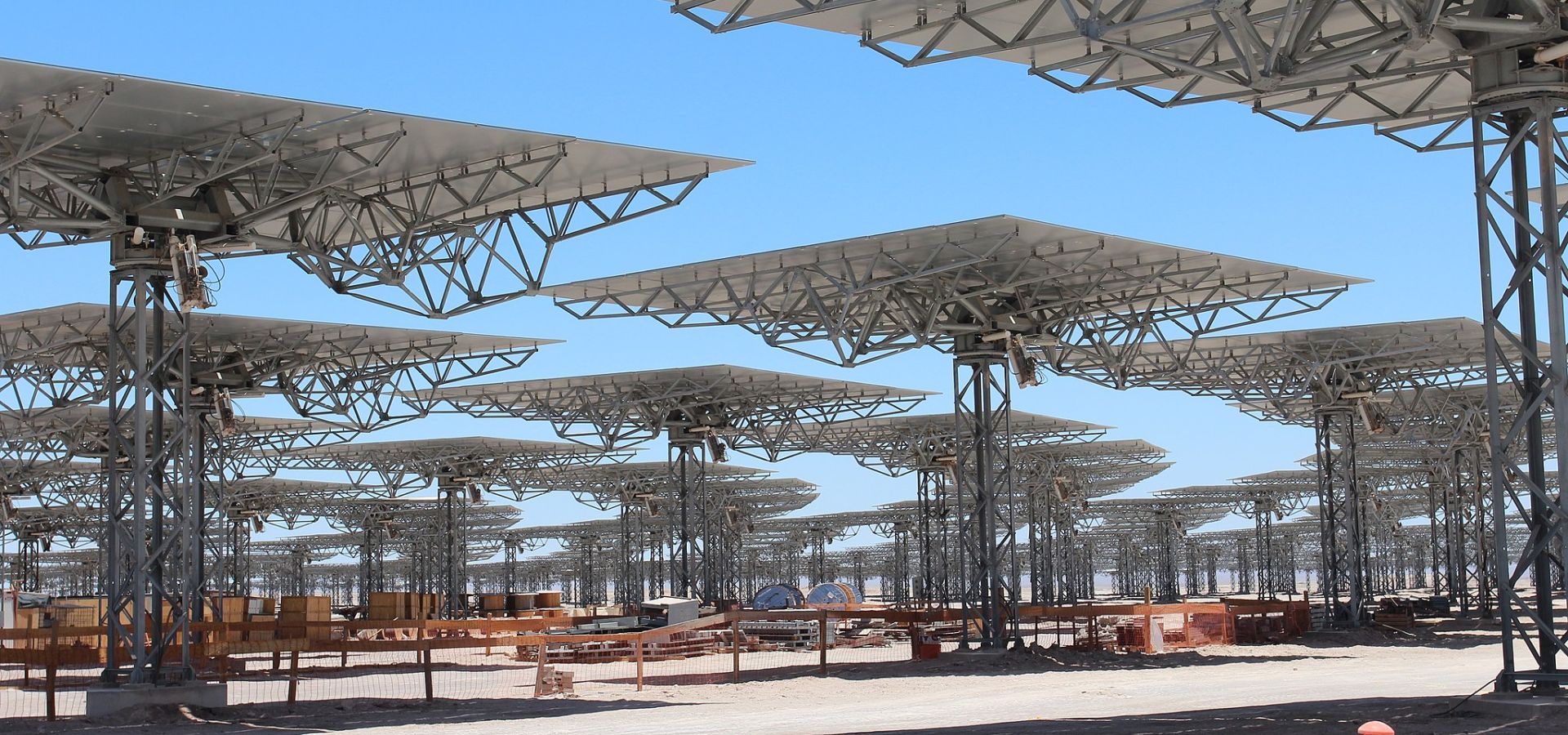One widespread objection to renewables is the fact that they need some kind of backup, such as gas or hydro power. But as technologies advance, the possibility of storing electricity generated by renewables seems like not-a-too-distant future. The new concentrated solar power plant in Chile is bringing Latin America to the forefront, says Maximiliano Proaño.

The solar power plant Cerro Dominador in Chile (Photo by Ministra visita planta fotosolar Cerro Dominador; CC BY 2.0)
Latin American power mix shifts from hydro to renewables
Currently, the Latin American electricity mix is dominated by hydropower (which generates around 50% of all electricity). But its rates are decreasing overall: according to IRENA, hydro accounted for 95% of the renewable energy mix in 2000, but fell to around 80% in 2015 when it made up 172 GW of the 212 GW total renewable energy installed. The reason for this change is that the share of wind and solar is increasing.
There are severe environmental and social concerns related to large-scale hydropower as it often results in the displacement of communities, flooding and deforestation. In addition, the last years have seen weather phenomenon El Niño make hydroelectric supply less predictable due to climate change. It is therefore unlikely that hydro will continue to play such a dominant energy source in the region.
Hydropower capacity can be replaced by a combination renewables and energy storage. There are four main categories of energy storage: pumped hydro storage, thermal storage, electrochemical and electro-mechanical storage.
Pumped hydro storage currently dominates global installed storage power capacity, with 96% of the total of 176 GW installed globally. The other electricity storage technologies with a significant global share include thermal storage, with 3.3 GW (1.9%); batteries, with 1.9 GW (1.1%) and other electro-mechanical storage with 1.6 GW (0.9%).
Latin America has the potential to generate 100% of its energy from renewable sources. But until now, no significant storage projects were in place in the region. While there are more than 145 GW of installed pumped hydro storage capacity worldwide, Latin America only has 1 GW, concentrated in Argentina. And there is a general lack of recent estimates of the storage potential.
Storing renewable energy in Chile
In the Atacama Desert in northern Chile, there is a project that has obtained the attention of energy experts worldwide: it is the first concentrated solar plant (CSP) of Latin America called Cerro Dominador.
How does it work? As the website of the project explains, the solar-thermal power plant project has a circular solar field spread around a central tower, with 10,600 heliostats (mirrors). These heliostats automatically track the sun, concentrating solar power at the receiver. The concentrated heat is then transferred to a current of cold molten salts placed in a system of tanks. The heated salts are then used to heat water to create steam, which in turn is used to drive a 110MW turbine for generating electricity.
The molten salt technology used in the plant will have the capacity of storing electricity for up to 18 hours, allowing continuous storage and transmission, which will generate electricity 24 hours a day. The project, once operating, will prevent the emission of approximately 643,000 tons of CO2 into the atmosphere every year, equivalent to the annual emissions from 357,000 vehicles.
The project also has had a positive impact on local jobs. The “mirrors program” alone employs 120 people, almost half of whom are women.
Financing problems overcome
The project was awarded in 2014 to supply 950 GWh per year for 15 years, in a tender carried out by the National Energy Commission (CNE) of the Chilean Government. Nevertheless, the construction of the plant was delayed by more than a year when the Abengoa Company – one of the two developers of the project – was at the brink of bankruptcy and transferred its part to the other developer of the project Global Energy Partners (EIG). In May of 2018, the financing problems were solved when EIG obtained US$ 758 million from a group of banks and financial institutions. Construction has resumed and is expected to terminate in 2020.
The success of the project could set important signals to other parts of Latin America when it comes to developing storage options. If successful, it could prove a good test case for similar projects throughout the region and provide a viable solution to the intermittency issue with renewable energies. This could significantly shift the debate on the energy transition on a continent that is still struggling with implementing renewable energy projects.